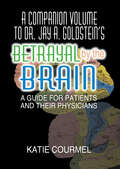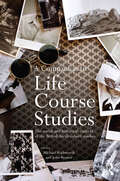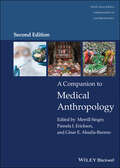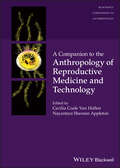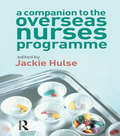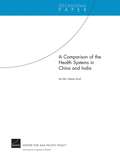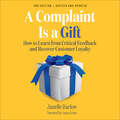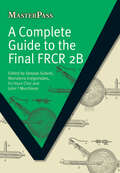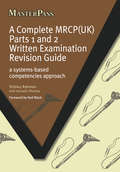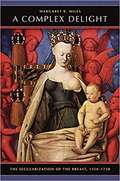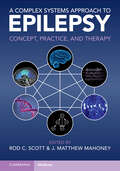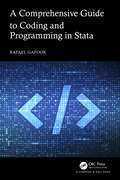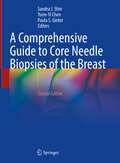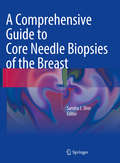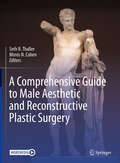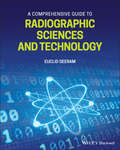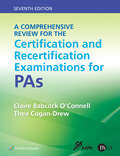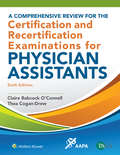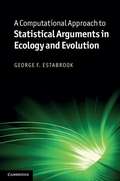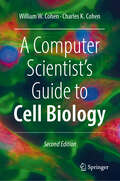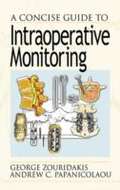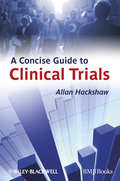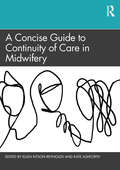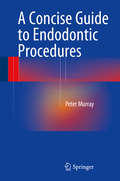- Table View
- List View
A Companion Volume to Dr. Jay A. Goldstein's Betrayal by the Brain: A Guide for Patients and Their Physicians
by Katie CourmelDr. Jay A. Goldstein’s Betrayal by the Brain can be a daunting treatise to the layperson as well as a challenge for the physician who is not versed in neurology, psychiatry, immunology, and endocrinology. Here, in A Companion Volume to Dr. Jay A. Goldstein’s Betrayal by the Brain: A Guide for Patients and Their Physicians, Author Katie Courmel, a longtime sufferer of chronic fatigue syndrome and fibromyalgia, presents in layperson’s terms the salient points of the book to lead readers to an understanding of Dr. Goldstein’s theory and methods of treatment. This guide provides CFS and FMS patients with an understanding of how their brains should function as opposed to how they are now dysfunctioning. It explains the proper role and function of each brain structure and neural assembly and the neurochemicals believed to be implicated in CFS and fibromyalgia along with the dysfunctions found in CFS/FMS patients. These dysfunctions, as a whole, form the basis of Dr. Goldstein’s unified theory behind the possible causes of CFS and FMS. Patients involved in or contemplating Dr. Goldstein’s treatment can use A Companion Volume to Dr. Jay A. Goldstein’s Betrayal by the Brain to gain an explanation of the process from a firsthand perspective and can follow along to learn why they are given particular drugs and what response Dr. Goldstein hopes to elicit from their bodies. This understanding gives patients a sense of control and helps them weather the ups and downs their bodies experience as a normal response to the treatment. The strength of A Companion Volume to Dr. Jay A. Goldstein’s Betrayal by the Brain lies in its ability to simplify without sacrificing the body of information that one must understand to make sense of the multitude of seemingly unrelated manifestations of these diseases of the brain. A thorough understanding will allow sufferers of CFS/FMS to approach Dr. Goldstein’s treatment method with an open mind and improve their chances for success. Specific questions answered for readers include: how safe is this protocol? should I go alone or take a companion? what should I expect during my initial consultation? what are the effects of so many drugs? why doesn’t the same drug work for everyone? if my treatment is successful, how long will it last? what happens when I leave Dr. Goldstein’s care? A Companion Volume to Dr. Jay A. Goldstein’s Betrayal by the Brain prepares readers for a unique, sometimes scary, often perplexing, hopefully miraculous, leap-of-faith experience. It helps patients deal with the very natural sense of uneasiness they may be feeling and helps them understand, in layperson’s terms, what Dr. Goldstein’s protocol can accomplish and how it can be so successful.
A Companion to Life Course Studies: The Social and Historical Context of the British Birth Cohort Studies (Routledge Advances in Sociology)
by Michael Wadsworth; John BynnerSince the end of the Second World War, society has been characterised by rapid and extensive political, economic, scientific, and technological change. Opportunities for education, employment, human relations, and good health, have all been greatly affected by those changes, as have all aspects of life. Consequently, each post-war generation has been like no other before or since. Britain, uniquely, has five large-scale life course studies that began at intervals throughout that period. They have shown how lives are shaped by individual characteristics, their past and current experiences and opportunities, and so reflect their times. This book describes those fundamental changes that affected life chances differently in each generation, and how governments struggled to accommodate the changes with new policies for improving and managing the nation's capital in terms of education, family policy, health, human rights, and economics. A Companion to Life Course Studies provides a resource for the interpretation of the findings and design differences in the five studies, and the stimulus for new comparisons of life course between these differing generations that would contribute to policy and to understanding.
A Companion to Medical Anthropology (Wiley Blackwell Companions to Anthropology)
by Merrill Singer Pamela I. Erickson César E. Abadía-BarreroThe fully revised new edition of the defining reference work in the field of medical anthropology A Companion to Medical Anthropology, Second Edition provides the most complete account of the key issues and debates in this dynamic, rapidly growing field. Bringing together contributions by leading international authorities in medical anthropology, this comprehensive reference work presents critical assessments and interpretations of a wide range of topical themes, including global and environmental health, political violence and war, poverty, malnutrition, substance abuse, reproductive health, and infectious diseases. Throughout the text, readers explore the global, historical, and political factors that continue to influence how health and illness are experienced and understood. The second edition is fully updated to reflect current controversies and significant new developments in the anthropology of health and related fields. More than twenty new and revised articles address research areas including war and health, illicit drug abuse, climate change and health, colonialism and modern biomedicine, activist-led research, syndemics, ethnomedicines, biocommunicability, COVID-19, and many others. Highlighting the impact medical anthropologists have on global health care policy and practice, A Companion to Medical Anthropology, Second Edition: Features specially commissioned articles by medical anthropologists working in communities worldwide Discusses future trends and emerging research areas in the field Describes biocultural approaches to health and illness and research design and methods in applied medical anthropology Addresses topics including chronic diseases, rising levels of inequality, war and health, migration and health, nutritional health, self-medication, and end of life care Part of the acclaimed Wiley Blackwell Companions to Anthropology series, A Companion to Medical Anthropology, Second Edition, remains an indispensable resource for medical anthropologists, as well as an excellent textbook for courses in medical anthropology, ethnomedicine, global health care, and medical policy.
A Companion to the Anthropology of Reproductive Medicine and Technology (Wiley Blackwell Companions to Anthropology)
by Nayantara Sheoran Appleton Cecilia Coale Van HollenProvides fresh perspectives on the past, present and future-facing contributions of the anthropology of reproduction. A Companion to the Anthropology of Reproductive Medicine and Technology provides a timely and comprehensive overview of the anthropological study of reproductive practices, technologies, and interventions in a global context. Exploring the medical and technological management of human reproduction through a sociocultural lens, this groundbreaking volume reviews past and current research, discusses contemporary debates and recent theoretical developments, introduces key themes and trends, examines ongoing issues of equity, inclusivity, and reproductive justice around the world, and more. The Companion brings together essays by multidisciplinary scholars in fields including sociocultural anthropology, medical anthropology, reproductive health, global public health, Science and Technology Studies (STS), gender and sexuality studies, critical race studies, and environmental studies, to list but a few. Five thematically organized sections address reproductive practitioners and paradigms, global reproductive health and interventions, reproductive justice, the life-course approach to the study of reproductive health, and the future of reproductive technology and medicine. Using clear, jargon-free language, the authors investigate pregnancy and childbirth; fertility treatments; birth control, contraception and abortion; COVID-19 and reproduction; reproductive cancers; epigenetics; social discrimination; gender and sexualities and reproduction for LGBTQIA+ communities; race and reproduction; migration and reproduction; reproduction and war; reproductive health financing; reproduction and disabilities, reproduction and the environment; and other important contemporary topics. A cutting-edge guide to the modern study of reproduction, this groundbreaking volume: Provides an overview of the links between anthropological study and progressive work in medicine, healthcare, and technology Addresses both the challenges and opportunities facing researchers in the field Identifies gaps in current scholarship and offers recommendations for future research topics and methodologies Highlights the importance of ethnographic research combined with critical engagements with other disciplines for the anthropology of reproduction Explores the impact of socioeconomic conditions, environmental challenges, public policy, and legislation on reproductive health outcomes Traces the history of the field and demonstrates how anthropologists have engaged with issues of reproductive justicePart of the acclaimed Wiley Blackwell Companions to Anthropology series, A Companion to the Anthropology of Reproductive Medicine and Technology is an essential resource for undergraduate and graduate students, researchers, and scholars in medical anthropology, science technology and society, cultural anthropology, ethnology, and gender studies, as well as medical practitioners, policymakers, and activists involved in global and public health and reproductive justice.
A Companion to the Overseas Nurses Programme
by Jackie HulseThis book covers everything that the overseas student will need before and during their studies on the Overseas Nursing Programme (ONP). Techniques are covered to help with work and studying, as well as plenty of exercises and activities to help the student towards success. It provides information to guide the student both through the ONP and also working in the NHS. It also makes the student aware of the responsibilities that both they and their employers have as they begin working.
A Comparison of the Health Systems in China and India
by Neeraj Sood Sai MaThe health status of residents of China and India lags behind relative to other populations, and health gains in each country have been uneven across subpopulations. Each health system provides little protection against financial risk, and patient satisfaction is a lower priority than it should be. This paper compares the Chinese and Indian health systems to determine what approaches to improving health in these two countries do and do not work.
A Complaint Is a Gift: How to Learn from Critical Feedback and Recover Customer Loyalty
by Janelle BarlowThe third edition of this bestseller (over 275,000 copies sold) builds on the tested formula that helps organizations recognize the value of complaints using updated examples and concepts in the age of COVID-19. The first edition of A Complaint Is a Gift introduced the revolutionary notion that customer complaints are not annoyances to be dodged, denied, or buried but are instead valuable pieces of feedback-not to mention your best bargain in market research. Complaints provide a feedback mechanism that can help organizations rapidly and inexpensively strengthen products, service style, and market focus. Most importantly, complaints that are well received create customer loyalty.This new edition condenses the tried and true eight-step formula into a tighter, more efficient three-step formula. From her work with clients, the author has updated industry-specific complaint examples and added in new concepts, such as a process that enables employees to handle complaints with increased emotional resilience-something that is sorely needed since dealing with increasingly difficult customers is a common occurrence in the wake of the COVID-19 pandemic. Handling complaints doesn't have to be a negative, soul-crushing experience. Janelle Barlow gives the right tools to treat each of them as a source of innovative ideas that can transform your business.
A Complete Guide to the Final FRCR 2B (MasterPass)
by Deepak Subedi Marialena Gregoriades En Hsun Choi John T MurchisonThis book aims to help candidates preparing for the Final FRCR 2B examinations held by the Royal College of Radiologists of the UK, and the Joint Final FRCR/FHKCR Part B Examination for the Fellowship of the Royal College of Radiologists and Hong Kong College of Radiologists. This book provides advice on preparation techniques, followed by dozens of practice cases and images relevant to all three sections of the examination: reporting session, rapid reporting session and oral examination/viva voce. The richly-illustrated book contains images of plain X-rays, CT, MR, US and radionuclide scans, making it particularly useful for candidates who have limited access to teaching or film libraries. A selection of both common and uncommon cases is included, giving candidates a realistic idea of the level of preparation and the breadth and depth of knowledge needed for success. Although primarily focused on the FRCR 2B examination, radiology trainees across the world facing viva and reporting sessions and candidates for American Board Examinations will find this a useful and informative book.
A Complete MRCP: A Systems-Based Competencies Approach (MasterPass)
by Shibley Rahman Avinash SharmaA practical manual of clinical medicine, arranged systematically and concisely as a wide-ranging systems-based survey of the main points of clinical practice - perfectly geared towards study for the MRCP(UK) Part 1 examination. Neil Black, in the Foreword The MRCP exam is not only a necessary hurdle to pass for any junior doctor wishing to become a hospital physician in the UK, but also an excellent training in the theory and clinical skills needed to be a senior physician. This book is a comprehensive revision text covering all the clinical subjects of the MRCP Part 1 and 2 examination. It adheres to the MRCP official syllabus and also reflects UK clinical guidelines as well as peer-reviewed medical research papers. The information is set out in an easily accessible way, making studying for this important exam productive and enjoyable. Organised by subject area, salient points are noted and the contents give appropriate weighting to the individual topics. Boxed text, tables and figures all add to this concise guide's appeal. Whilst it covers much traditional material such as lists of causes and differential diagnoses, this is the only book written entirely according to the current evidence-base as published by NICE, SCIE and the Cochrane Collaboration. This is a one-stop manual for candidates of the MRCP Part 1 and 2 but is also highly recommended for MRCP Part 2 written candidates and undergraduates sitting their final year examinations.
A Complex Delight: The Secularization Of The Breast, 1350-1750
by Margaret R. Miles Vanessa LyonLooking at painting and sculpture from the fourteenth through the eighteenth centuries, this provocative work focuses on the symbolism of the female breast to open a dazzling interpretive view of Western European history over four centuries. Margaret R. Miles finds that while in 1350 the Virgin's bare breast represented nourishment and loving care―God's provision for the Christian―by 1750, artistic representations of the breast were either erotic or medical. The breast had lost its meaning as a religious symbol. But how did the breast, and nakedness more generally, lose the ability to represent human bodies as site and symbol of religious subjectivity and commitment? To explore this phenomenon, Miles engages in a wide-ranging investigation of the social, cultural, and religious circumstances within which a religious symbol came to be thoroughly "mastered" by erotic and medical meanings. What emerges is a nuanced understanding of the location of power in early modern Western Europe, of how the lives of women changed over this period, of how art reveals and helps to construct religious meaning, and of how modern Christianity's attitude toward bodies was shaped.
A Complex Systems Approach to Epilepsy: Concept, Practice, and Therapy
by Rod C. Scott J. Matthew MahoneyThe epilepsies are devastating neurological disorders for which progress developing effective new therapies has slowed over recent decades, primarily due to the complexity of the brain at all scales. This reality has shifted the focus of experimental and clinical practice toward complex systems approaches to overcoming current barriers. Organized by scale from genes to whole brain, the chapters of this book survey the theoretical underpinnings and use of network and dynamical systems approaches to interpreting and modeling experimental and clinical data in epilepsy. The emphasis throughout is on the value of the non-trivial, and often counterintuitive, properties of complex systems, and how to leverage these properties to elaborate mechanisms of epilepsy and develop new therapies. In this essential book, readers will learn key concepts of complex systems theory applied across multiple scales and how each of these scales connects to epilepsy.
A Comprehensive Guide to Coding and Programming in Stata
by Rafael GafoorThis book is an introductory guide to programming and coding in Stata. Commonly encountered code in the field of medical statistics as well as the analyses of observational data are presented.For those who are involved in the analyses of observational studies, the need to sometimes assemble large datasets will necessitate a detailed understanding of loops and macros. This book covers these materials early on and then describes other commonly required coding commands.For those who program in a controlled environment (.e.g. medical statisticians who perform analyses for regulatory bodies), the production of log files, a suggested folder structure and analysis pathway are covered. This book also includes a wide range of tabulation commands and other methods of producing tables of descriptive statistics. The text also then provides a clear explanation of how to perform some inferential analyses (including how to extract and format the coefficients for use in subsequent reports).The focus on coding allows beginners to grasp the basics of coding and programming, as well as allowing established researchers to hone their skills and become more advanced programmers.Key Features: Covers the fundamental of using and understanding Stata. Able to be used by anyone looking to learn the basics of coding. Introduces and explains difficult concepts such as macros from the outset.
A Comprehensive Guide to Core Needle Biopsies of the Breast
by Sandra J. Shin Yunn-Yi Chen Paula S. GinterBreast cancer remains the leading cause of cancer in women, which makes accurate diagnoses on core needle biopsy (CNB) specimens of vital importance in staging and guiding therapy decisions for patients. The first edition of this multi-authored text written by leaders in the field from major academic medical centers provided a comprehensive guide on diagnostic breast pathology in the core biopsy setting. In addition to in-depth coverage of benign and malignant entities encountered in breast core biopsies, the book provided additional resources to improve diagnostic accuracy such as pattern-based approaches to evaluation, mimickers of breast lesions arising in extra-mammary sites, and pitfalls specific to small tissue samples. In recent years, there have been several notable developments in the field of breast pathology including revisions in AJCC breast cancer staging, updated guidelines in the testing and reporting of ER, PR, and HER2, as well as implementation of immunotherapy and companion biomarker testing. In addition, several key updates were included in the most recent edition of the WHO Classification of Breast Tumours (2020). In addition to updates specific to individual breast entities, the second edition will detail updates regarding biomarker testing in the primary and metastatic setting, and incorporate newly defined entities and updated definitions of rare tumors in alignment with the WHO Classification of Breast Tumours (2020). Furthermore, this edition will address the role of CNB in companion biomarker testing for eligibility for immunotherapy in the context of advanced triple-negative breast carcinoma. Written by leaders in the field and edited by expert breast pathologists, The Second Edition of Comprehensive Guide to Core Needle Biopsies of the Breast is the definitive reference on breast core needle biopsies for practicing pathologists, pathology trainees, oncologists and clinicians of patients with breast disease.
A Comprehensive Guide to Core Needle Biopsies of the Breast
by Sandra J. ShinThis first multi-authored work exclusively dedicated to breast lesions in core needle biopsy samples, A Comprehensive Guide to Core Needle Biopsies of the Breast is an all-inclusive textbook that provides an overview of the fundamentals of a breast core needle biopsy program, instructive topics on diagnostic approaches to breast core biopsies including a pattern-based strategy, and in-depth coverage of all entities commonly seen in the core biopsy setting. In addition, chapters detailing special scenarios or topics including the role of molecular profiling in small breast samples and personalized medici≠ metastasis to the breast and dermatologic mimickers of breast lesions arising in the breast skin, subcutis or axilla complete the impressive scope of this authoritative book. The book features over 900 high-quality images, charts, and diagrams. Written by leaders in the field and edited by expert breast pathologist, Dr. Sandra J. Shin, A Comprehensive Guide to Core Needle Biopsies of the Breast is the definitive reference on breast core needle biopsies for practicing pathologists, pathology trainees, and clinicians of patients with breast disease.
A Comprehensive Guide to Male Aesthetic and Reconstructive Plastic Surgery
by Mimis N. Cohen Seth R. ThallerThis book offers an authoritative and comprehensive overview of the wide range of surgical procedures and non-invasive options for the male cosmetic and reconstructive patients. Chapters examine the full gamut of unique male aesthetic and reconstructive surgical procedures, written by an interdisciplinary team of well-known and well-respected national and international contributors. The book provides an up-to-date and highly illustrated coverage of existing techniques and innovative, new technologies. Chapters relay the interplay between the unique male anatomy, expectations, clinical implications, therapeutic gems and approach to men seeking aesthetic enhancements. Each chapter highlights a concise but comprehensive description of the clinical issue augmented by appropriate illustrations, related art works, and videos. When applicable, an interdisciplinary style utilizing the expertise of allied specialties such as dermatology, facial plastic surgery, and oculoplastic surgery are utilized.Chapters address key issues and areas not previously included in other books, such as:Direct excision of nasolabial folds and submental regionFacial rejuvenation and other aesthetic procedure available to people of colorSurgery for body buildersBuried penisManagement of hyperhidrosisHIV: facial wasting and buffalo humpA Comprehensive Guide to Male Aesthetic and Reconstructive Surgery is a must-have resource for plastic and reconstructive surgeons to successfully manage the distinctive, unique needs of the male patient.
A Comprehensive Guide to Radiographic Sciences and Technology
by Euclid SeeramA comprehensive and succinct guide to radiographic physics and imaging, covering all the core components of the radiographic sciences, including digital imaging production and equipment, radiation protection and safety, and the principles of Computed Tomography. Designed to support students preparing to sit certification and board examinations, including the American Registry for Radiologic Technologists (ARRT) and other global radiography certification examinations. Addresses the core radiographic science components of the ASRT curriculum, including digital imaging production and equipment, radiation protection and safety, and the principles of Computed Tomography. Useful for students and practitioners in diagnostic medical radiation technology, radiography and medical radiation sciences, as well as in biomedical engineering technology.
A Comprehensive Review for the Certification and Recertification Examinations for PAs
by Claire Babcock O’Connell Thea Cogan-DrewEndorsed by the American Academy of PAs (AAPA) and the Physician Assistant Education Association (PAEA), A Comprehensive Review for the Certification and Recertification Examinations for PAs is a trusted resource for mastering the core information you need to know to pass the Physician Assistant National Certifying Exam (PANCE) or the Physician Assistant National Recertifying Exam (PANRE). The most complete resource of its kind, this updated edition reflects the latest developments in the field and features engaging study tools, review questions, and new quick-review Pearls to reinforce your knowledge, guide your studying, and increase test-taking confidence.
A Comprehensive Review for the Certification and Recertification Examinations for Physician Assistants: In Collaboration With Aapa And Paea
by Claire O'ConnellPrepare for PANCE or PANRE with the most trusted review tool, A Comprehensive Review for the Certification and Recertification Examinations for Physician Assistants
A Computational Approach to Statistical Arguments in Ecology and Evolution
by George EstabrookScientists need statistics. Increasingly this is accomplished using computational approaches. Freeing readers from the constraints, mysterious formulas and sophisticated mathematics of classical statistics, this book is ideal for researchers who want to take control of their own statistical arguments. It demonstrates how to use spreadsheet macros to calculate the probability distribution predicted for any statistic by any hypothesis. This enables readers to use anything that can be calculated (or observed) from their data as a test statistic and hypothesize any probabilistic mechanism that can generate data sets similar in structure to the one observed. A wide range of natural examples drawn from ecology, evolution, anthropology, palaeontology and related fields give valuable insights into the application of the described techniques, while complete example macros and useful procedures demonstrate the methods in action and provide starting points for readers to use or modify in their own research.
A Computer Scientist's Guide to Cell Biology
by William W. Cohen Charles K. CohenUnlike the structured world of computer science, biology is complex, evolving, and often lacks clean abstract models. This book aims to serve as a guide for computer scientists who need to understand cell biology, breaking the field into three parts: biological mechanics, experimental methods, and language/nomenclature. While biological mechanics, which investigates cellular-level details, is covered by many texts, this book also focuses on experimental methods – how biologists conduct experiments and gather data - and on helping the reader understand the language and terminology of biology, which is rich but challenging for non-biologists. A Computer Scientist's Guide to Cell Biology uses a metaphor of biology as a strange land with an unfamiliar language and customs. The goal of the book is to provide a high-level introduction to cell biology, simplifying concepts and relating them to familiar ideas from computer science, so that working computer scientists can more effectively understand read recent research papers and results.This Second Edition contains a number of updates, including discussions of CRISPR, advances in DNA Sequencing, and mRNA vaccines. It serves as an easy-to-read travel guide for computer scientists navigating the intricate and sometimes perplexing terrain of cell biology, offering insights into experimental methods and helping bridge the gap between the structured world of computer science and the complexities of biological systems.
A Concise Guide To Intraoperative Monitoring
by George Zouridakis Andrew PapanicolaouCovering both the applications and the related theory, A Concise Guide to Intraoperative Monitoring provides a general but comprehensive introduction to IOM. Unlike existing texts that typically report the results of specific studies, this book presents comprehensive coverage of the entire procedure, as well as the specific protocols used in hospital practice, examples of typical recordings, possible problems, and recommended solutions. At the end of each chapter the author poses several questions for review. These questions help technologists and medical residents in their preparation for the board exams. Taken together, these features make the book an ideal reference or training manual. <p><p> A Concise Guide to Intraoperative Monitoring begins by discussing the basic principles underlying the generation of bioelectrical signals. It then describes the electronic equipment and the various electrophysiological procedures involved in IOM. From this foundation, the book gradually advances to more specific topics, such as surgical procedures, neuronal structures at risk, the optimum combinations of tests to administer, and the proper interpretation of test results. The material also provides you with a background on general anesthesia and analyzes the effects of various drugs on electrophysiological recordings. A Concise Guide to Intraoperative Monitoring also discusses the proper placement of stimulation and recording electrodes, as well as intervention strategies and equipment troubleshooting.
A Concise Guide to Clinical Trials
by Allan HackshawClinical trials have revolutionized the way disease is prevented, detected and treated, and early death avoided, and they continue to be an expanding area of research. They are central to the work of pharmaceutical companies, and there are many academic and public sector organizations that conduct trials on a wide variety of interventions, including drugs, devices, surgical techniques, and changes in behaviour and lifestyle. A Concise Guide to Clinical Trials provides a comprehensive yet easy-to-read overview of the design, conduct and analysis of trials. It requires no prior knowledge on the subject as the important concepts are introduced throughout. There are chapters that distinguish between the different types of trials, and an introduction to systematic reviews, health-related quality of life and health economic evaluation. The book also covers the ethical and legal requirements in setting up a clinical trial due to an increase in governance responsibilities and regulations. This practical guidebook is ideal for busy clinicians and other health professionals who do not have enough time to attend courses or search through extensive textbooks. It will help anyone involved in undertaking clinical research, or those reading about trials. The book is aimed at: Those wishing to learn about clinical trials for the first time, or as a quick reference guide, for example as part of a taught course on clinical trials Health professionals who wish to conduct their own trials, or participate in other people’s studies People who work in pharmaceutical companies, grant funding organisations, or regulatory agencies
A Concise Guide to Clinical Trials
by Allan HackshawDesign and execute life-saving trials with this accessible resource Clinical trials have revolutionized the treatment of disease and the development of life-saving pharmaceuticals. They contribute decisively to diagnosis, the avoidance of early death, medical intervention and are central to the modern work of pharmaceutical producers. The design and execution of clinical trials is one of the fastest-growing and most important areas of medical and pharmaceutical research. A Concise Guide to Clinical Trials provides an accessible and comprehensive survey of clinical trials, their design, and their applications. Beginning with a taxonomy of trial types, the book overviews stages of analysis, ethical and legal requirements, and more. Now fully updated to reflect the latest research and clinical practice, it continues to be an indispensable resource for researchers and clinicians. Readers of the second edition of A Concise Guide to Clinical Trials will also find: New material on pharmaceutical trials, adaptive designs, and the use of “big data” The easy-to-use organization facilitates both first-time learning and reference Detailed treatment of concepts such as health technology assessments (HTA), patient and public involvement and engagement (PPIE), and more A Concise Guide to Clinical Trials is ideal for clinicians and healthcare professionals looking for a working knowledge of clinical trials, as well as for pharmaceutical workers and regulators looking to understand this vital aspect of the industry.
A Concise Guide to Continuity of Care in Midwifery
by Ellen Kitson-ReynoldsContinuity of care in midwifery – the most traditional way of practising – has been overlooked for much of the last century but is re-emerging as an evidence-based model of care, one which is known to benefit women. This book is a vital companion to students and qualified midwives as continuity of care is integrated into midwifery education and services. A practical, easy-to-read guide to practising caseload midwifery, this book outlines the contemporary political and professional context for midwifery care, different models of care, and the evidence and outcomes associated with continuity of carer. It discusses the real-life concerns, challenges and opportunities of working closely with women throughout their pregnancy and birth, covering key issues such as risk assessment, consent, boundaries, time management, documentation, communication, burnout and decision-making. Supporting the development of midwives from students to newly qualified professionals and beyond, it ends with a chapter containing a range of resources for reference, including helpful tools and worksheets. Including vignettes from students, qualified midwives, and women and their partners, this book is designed for anyone new to practising midwifery continuity of care.
A Concise Guide to Endodontic Procedures
by Peter MurrayThis clinical guide is a concise up-to-date resource that covers a wide range of endodontic procedures, including non-surgical root canal therapy, surgical root canal therapy, trauma care and the management of fractured teeth, apexification, apexogenesis, revascularization, regeneration, Cvek partial pulpotomy, root canal retreatment, and periapical surgery. The provision of numerous flowcharts, checklists, and advice on error avoidance for each procedure will assist in decision-making in daily practice. Scientific and clinical evidence regarding the use and efficacy of the different forms of treatment is summarized, and helpful information is also presented on instrumentation. The inclusion of exam questions will assist those preparing for endodontic examinations. A Primer on Endodontic Treatment will be of value for dental students, residents in training to become endodontists, endodontists, pediatric dentists, and established dentists.
